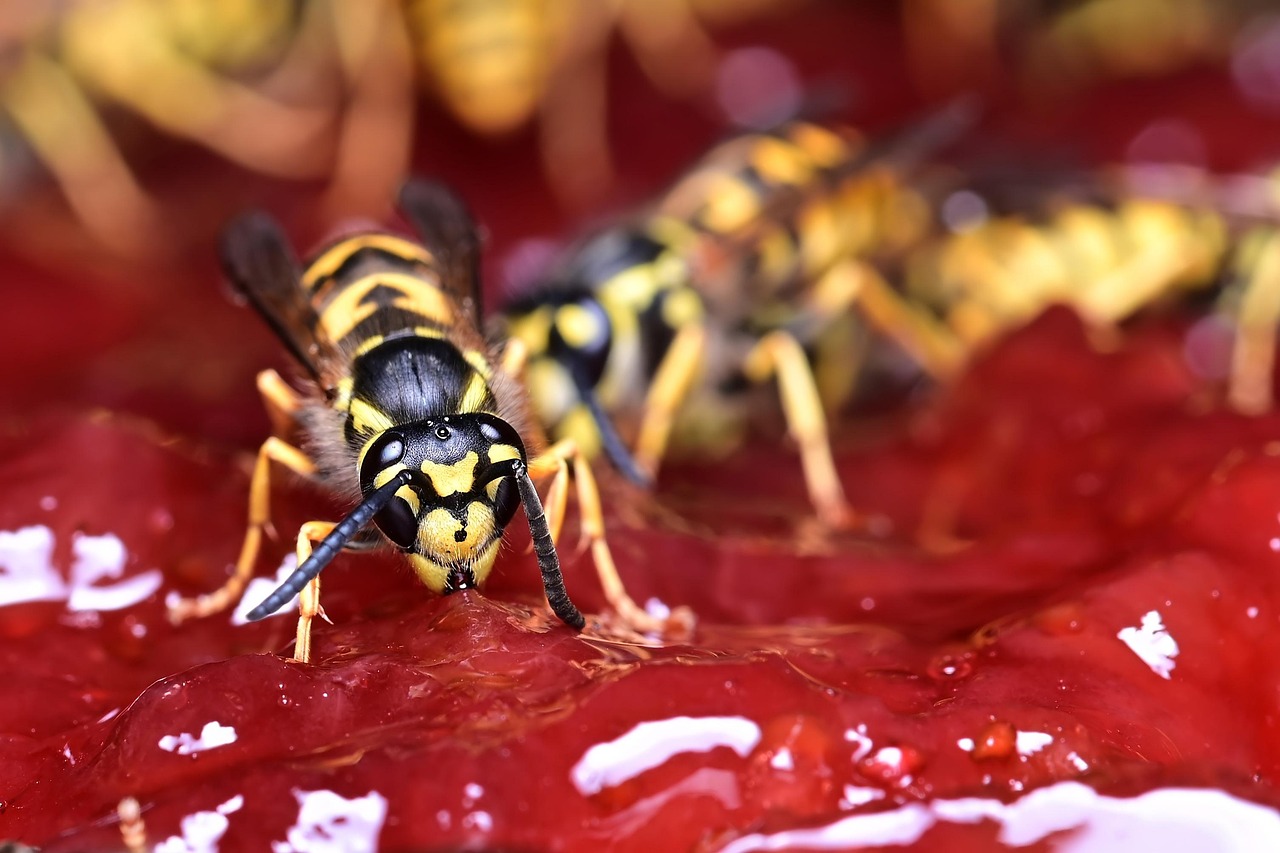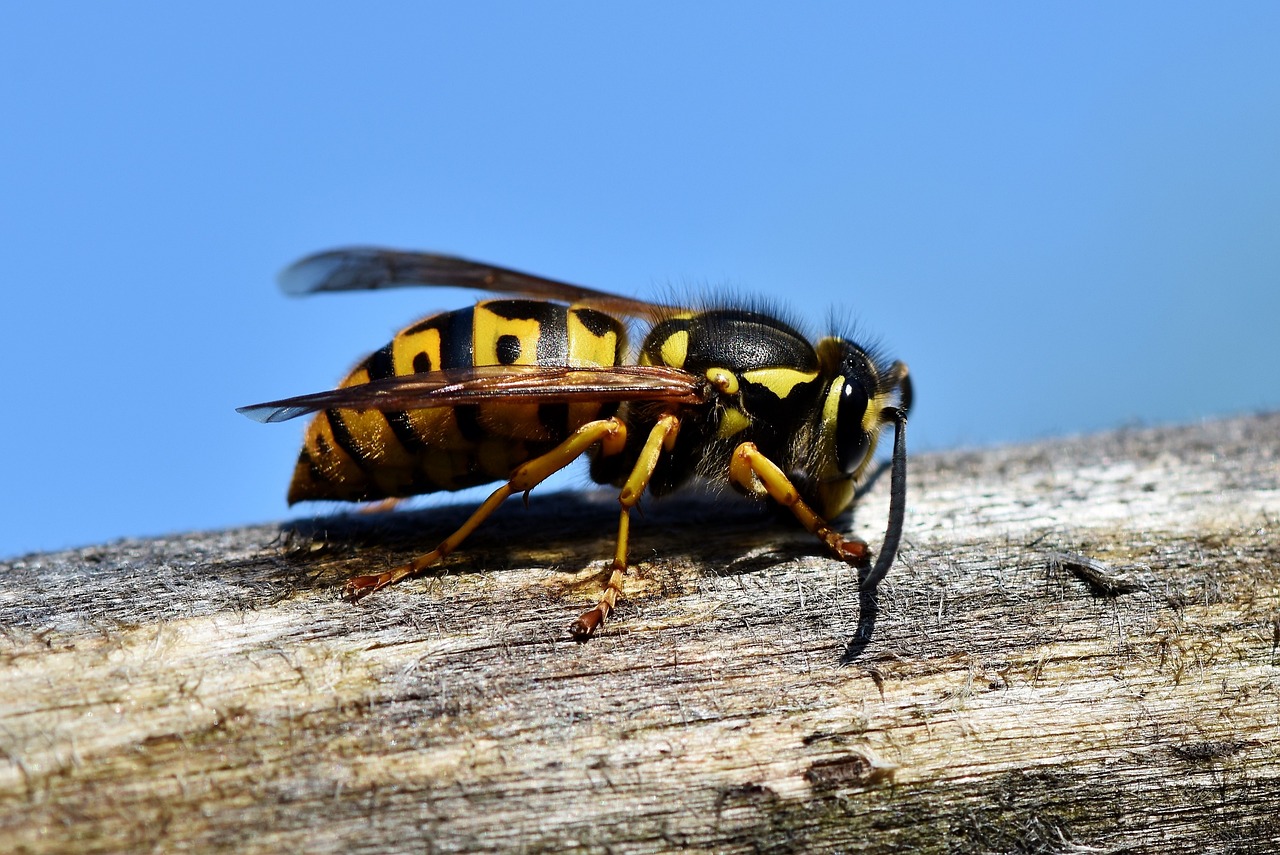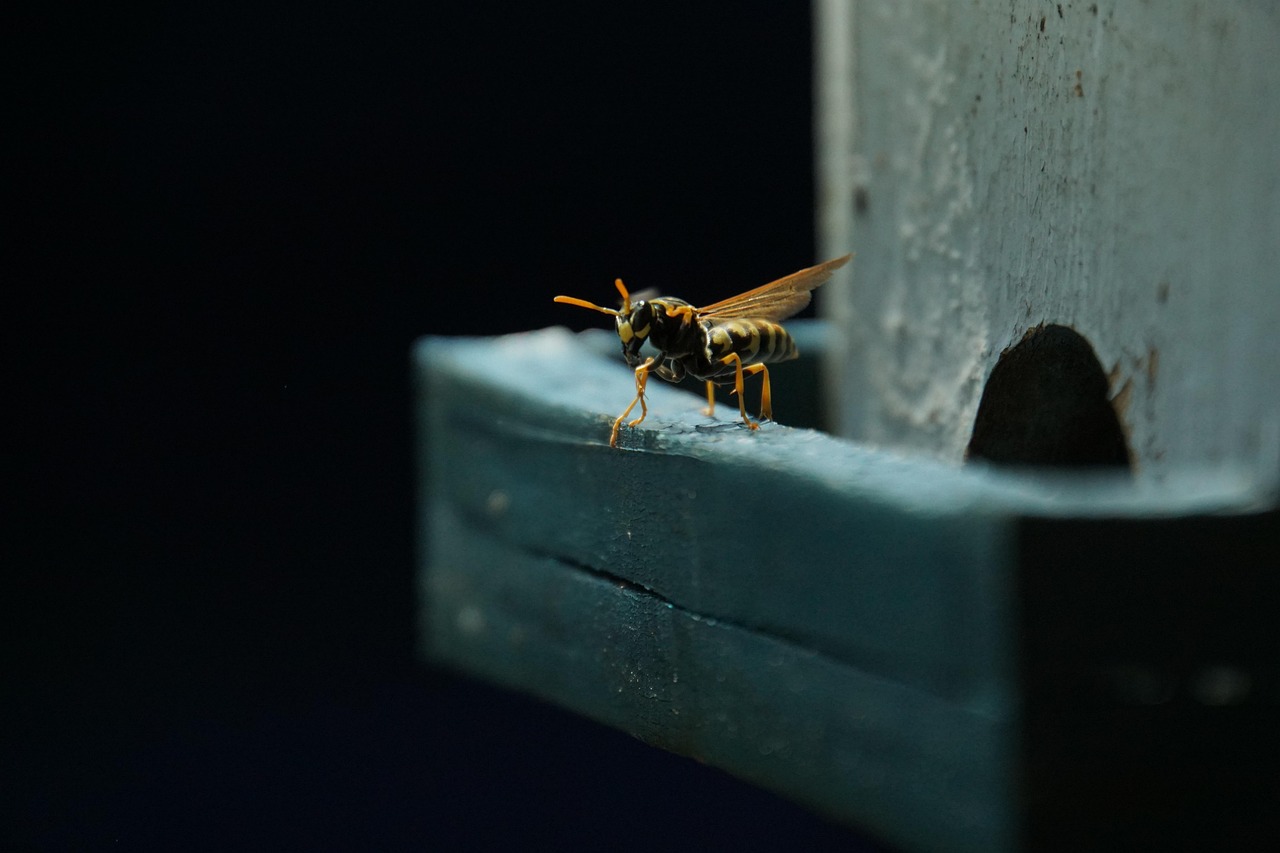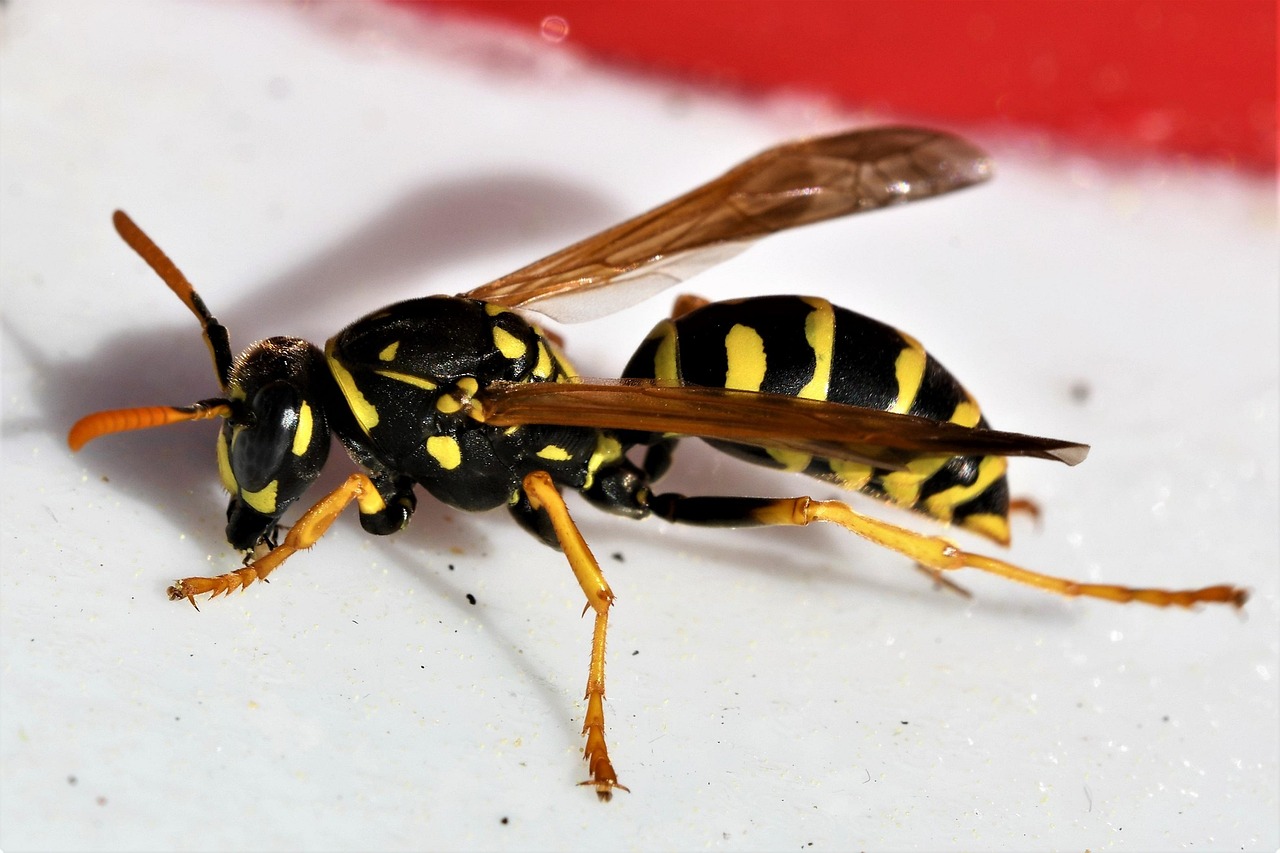Yes, paper wasps are beneficial insects. They play a crucial role in controlling pest populations by preying on various insects. However, their presence can also pose risks, particularly if they build nests near human activity, leading to potential stings.
Paper wasps belong to the family Vespidae and are known for their slender bodies and long legs. These insects are often recognized by their distinctive yellow and black coloration. Unlike some other wasp species, paper wasps are generally less aggressive. They tend to only sting when their nests are threatened, making them somewhat manageable in certain environments.
One of the most significant benefits of paper wasps is their role as natural pest controllers. They primarily feed on caterpillars and other soft-bodied insects, which helps regulate their populations. This predatory behavior can be particularly advantageous for gardeners and farmers looking to maintain healthy crops without resorting to chemical pesticides.
Understanding Paper Wasp Behavior

To appreciate the benefits and risks associated with paper wasps, it is important to understand their behavior and nesting habits. Paper wasps construct their nests using a papery material made from chewed wood fibers mixed with saliva. These nests are typically found in sheltered locations such as eaves, tree branches, or shrubs.
Here are some key behaviors and characteristics of paper wasps:
- Social Structure: Paper wasps live in colonies that can range from a few dozen to several hundred individuals. Each colony has a queen responsible for reproduction, while worker wasps care for the nest and forage for food.
- Nesting Season: The nesting season for paper wasps typically begins in late spring and lasts until the first frost. During this time, the queen starts a new colony from scratch each year.
- Feeding Habits: Adult paper wasps primarily feed on nectar and sweet substances. They also hunt for protein sources, such as caterpillars, to feed their larvae.
While they can be beneficial, there are some inherent risks associated with having paper wasps nearby. Their nests can become problematic if located close to human dwellings or high-traffic areas. Stings from paper wasps can cause allergic reactions in some individuals, leading to discomfort or more severe health issues.
Benefits of Paper Wasps
The benefits of having paper wasps in your garden or surrounding environment include:
- Pest Control: As mentioned, paper wasps are effective predators of many garden pests, providing a natural form of pest management.
- Biodiversity Promotion: By supporting wasp populations, gardeners contribute to the overall health of the ecosystem. Wasps play a vital role in pollination as well.
- Minimal Chemical Use: Utilizing natural predators like paper wasps reduces the need for chemical pesticides, promoting a healthier environment.
Despite these advantages, it is essential to weigh the risks associated with paper wasps carefully. Understanding their behavior and ecology can help individuals make informed decisions about coexistence strategies that minimize conflict while reaping the benefits they provide.
| Aspect | Details |
|---|---|
| Nesting Material | Chewed wood fibers mixed with saliva |
| Colony Size | Can range from dozens to hundreds |
| Feeding | Nectar for adults; caterpillars for larvae |
The balance between the benefits and risks of paper wasps suggests that understanding their ecological role is essential for managing their presence effectively. This knowledge allows individuals to appreciate the advantages these insects offer while taking precautions to mitigate any potential dangers.
Risks Associated with Paper Wasps
Despite their benefits, paper wasps can pose several risks, particularly when they build nests near human activities. Understanding these risks is crucial for managing encounters with these insects effectively.
Stinging Behavior
One of the primary concerns about paper wasps is their ability to sting. Their stings can cause pain, swelling, and, in some cases, allergic reactions. Here are some key points regarding their stinging behavior:
- Defensive Nature: Paper wasps are generally non-aggressive but will defend their nests if they perceive a threat. This behavior is most common during the nesting season.
- Allergic Reactions: Some individuals may experience severe allergic reactions to wasp stings, which can lead to anaphylaxis. This condition is life-threatening and requires immediate medical attention.
- Multiple Stings: If provoked, paper wasps can sting multiple times. Each sting can cause significant pain and discomfort.
Nest Location and Human Interaction
The location of paper wasp nests can create challenges for homeowners and outdoor enthusiasts. Here are some considerations regarding their nesting habits:
- Common Nesting Sites: Paper wasps prefer to build nests in sheltered areas like eaves, tree branches, and garden sheds. These locations are often close to human activity.
- Increased Nesting: If nests are not removed or managed, paper wasp populations can grow quickly. This increase can elevate the risk of stings.
- Visibility: Nests may go unnoticed until they become large and more visible. This can lead to unintentional encounters.
Managing Paper Wasp Populations
Effective management strategies can help minimize risks while allowing for the benefits that paper wasps provide. Here are some practical approaches for individuals and communities:
Preventive Measures
Taking preventive steps can significantly reduce the chances of unwanted encounters with paper wasps:
- Regular Inspections: Regularly inspect your property for new nests, especially in spring when they are first built.
- Nest Removal: If a nest is found in a problematic location, consider professional removal services. DIY removal can be hazardous without proper precautions.
- Seal Openings: Seal any openings in structures where wasps may enter to reduce nesting opportunities.
Creating a Wasp-Friendly Environment
While managing their presence is vital, creating a balanced environment that allows for beneficial insects can also be beneficial:
- Plant Selection: Planting flowers that attract beneficial insects can enhance the ecosystem and provide food sources for paper wasps.
- Avoiding Pesticides: Reducing or eliminating pesticide use helps maintain healthy insect populations, including paper wasps.
- Education: Educate family members about the importance of paper wasps and how to behave around them to prevent accidental stinging.
When to Seek Professional Help
In some situations, it may be best to consult pest control professionals rather than handle paper wasp issues independently. Here are scenarios where professional assistance is advisable:
- Large Nests: If a nest is large or located in a high-traffic area, professionals can manage removal safely.
- Allergic Individuals: If someone in your household has a known allergy to stings, engaging professionals is crucial to avoid health risks.
- Persistent Infestations: If nests continue to reappear despite management efforts, pest control experts can provide effective solutions.
By understanding the risks associated with paper wasps and implementing effective management strategies, individuals can enjoy the benefits these insects offer while minimizing potential dangers.

Paper Wasps and Their Role in Ecosystems

Understanding the ecological role of paper wasps is essential for appreciating their benefits beyond simple pest control. These insects contribute to various ecological processes that support biodiversity and the health of ecosystems.
Pollination Contributions
While paper wasps are primarily known for their predatory habits, they also play a role in pollination. Here are some insights into their contributions:
- Foraging Behavior: As paper wasps forage for nectar, they inadvertently transfer pollen from one flower to another. This process is crucial for plant reproduction.
- Pollinator Diversity: Paper wasps add to the diversity of pollinators in an environment, which can enhance overall plant health and productivity.
- Complementary Role: They often visit flowers that other pollinators may overlook, ensuring that a wider variety of plants receive pollination services.
Food Web Dynamics
Paper wasps are integral components of the food web. Their interactions with other species create a balance that supports ecosystem health. Consider the following:
- Pest Control: By preying on various pests, paper wasps help regulate populations of insects that could otherwise damage crops or spread diseases.
- Prey for Other Species: Paper wasps serve as a food source for birds, mammals, and other predators. This relationship helps maintain predator-prey dynamics in ecosystems.
- Decomposition Process: Their feeding habits contribute to the breakdown of organic matter, aiding nutrient cycling in the environment.
Economic Benefits of Paper Wasps
The presence of paper wasps can also have economic implications, particularly in agriculture and gardening. Understanding these economic benefits can help farmers and gardeners make informed decisions about managing these insects.
Agricultural Impact
Farmers can benefit from the natural pest control that paper wasps provide. Here are some aspects to consider:
- Reduction in Pest Damage: By keeping pest populations under control, paper wasps can reduce crop damage, leading to better yields.
- Lower Pest Management Costs: The presence of natural predators like paper wasps can decrease the need for chemical pesticides, reducing costs for farmers.
- Improved Crop Quality: Healthy plants free from excessive pest pressure often produce higher-quality fruits and vegetables.
Gardening Advantages
For home gardeners, understanding the benefits of paper wasps can create a more harmonious gardening experience:
- Natural Pest Control: Gardeners can rely on paper wasps to control populations of harmful insects such as caterpillars and aphids.
- Biodiverse Gardens: Encouraging beneficial insects like paper wasps promotes a diverse ecosystem within the garden, which can enhance resilience to pests and diseases.
- Educational Opportunities: Observing paper wasps can serve as an educational moment for families and children about nature, ecosystems, and the importance of biodiversity.
Cultural Perspectives on Paper Wasps
Cultural attitudes towards paper wasps vary widely across different societies. Understanding these perspectives can shed light on how people interact with these insects.
Symbolism in Various Cultures
In some cultures, paper wasps are viewed with respect due to their industrious nature and role in the ecosystem:
- Hard Work: The building of nests is often seen as a symbol of diligence and teamwork, which resonates with many cultural values.
- Nature’s Balance: Some communities recognize the role of paper wasps in maintaining ecological balance and view them as vital members of their environment.
Myths and Misconceptions
Conversely, negative experiences with stings can lead to fear and misunderstanding surrounding these insects:
- Avoidance Behaviors: Many people may choose to eliminate paper wasps without understanding their ecological benefits, leading to a loss of valuable insect populations.
- Misinformation: Common myths about their aggressiveness can perpetuate unnecessary fear, affecting how people manage their presence in gardens or homes.
By exploring both the ecological roles and cultural perspectives on paper wasps, individuals can develop a more nuanced understanding of these insects. This understanding aids in promoting coexistence rather than conflict with these beneficial creatures.
Additional Benefits of Paper Wasps

In addition to their roles in pest control and pollination, paper wasps contribute to environmental health in several other ways. Their activities can lead to improved soil health and increased plant diversity, which are crucial for sustainable ecosystems.
Improving Soil Health
The predatory habits of paper wasps can indirectly enhance soil quality through the following mechanisms:
- Nutrient Cycling: As paper wasps consume pests, they contribute to the breakdown of organic material in their environment. This process leads to the cycling of nutrients back into the soil, promoting healthier plant growth.
- Enhanced Microbial Activity: The presence of diverse insect populations, including paper wasps, can stimulate microbial activity in the soil. This activity is essential for nutrient availability and overall soil fertility.
Encouraging Biodiversity
Paper wasps play a role in fostering biodiversity within ecosystems. Their interactions with other species create a balanced environment where various organisms can thrive:
- Supporting Food Chains: By serving as both predators and prey, paper wasps help maintain food chains that are vital for ecological stability.
- Promoting Plant Diversity: Through their pollination activities, paper wasps support a range of flowering plants, which enhances overall biodiversity within the ecosystem.
Best Practices for Coexisting with Paper Wasps
To maximize the benefits of having paper wasps nearby while minimizing potential risks, individuals can adopt several best practices:
Encouraging Natural Habitats
Creating environments that attract beneficial insects, including paper wasps, can lead to healthier ecosystems:
- Diverse Plantings: Incorporate a variety of flowering plants that bloom at different times. This approach provides a steady food source for wasps throughout the growing season.
- Natural Shelters: Allow some natural areas to remain wild. This habitat can serve as nesting sites for paper wasps and other beneficial insects.
Education and Awareness
Increasing knowledge about paper wasps can help reduce fear and promote coexistence:
- Workshops: Host community workshops on the benefits of paper wasps and how to manage their presence safely.
- Resource Materials: Provide educational resources that outline the ecological roles of paper wasps and tips for safe interaction.
Conclusion
In summary, paper wasps are indeed beneficial insects that play significant roles in ecosystems through pest control, pollination, and contributing to biodiversity. While their stings can pose risks, understanding their behaviors and managing their presence can lead to positive coexistence. By educating ourselves and adopting best practices, we can appreciate the valuable contributions of paper wasps while protecting ourselves and our surroundings.
The balance between recognizing their ecological importance and managing risks associated with their presence allows individuals to promote healthier environments. By fostering respect for these creatures, we can ensure that their benefits continue to enrich our gardens and ecosystems for generations to come.
